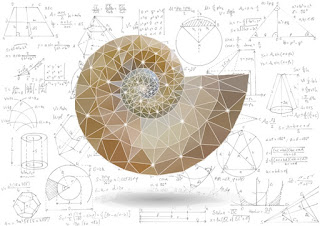DESMA 9 Week 9 Blog
I found Dr. Vesna's summary of Space in popular culture over time to be quite interesting. She discussed the history from Copernicus, to Galileo, to Arthur C. Clarke's space elevator, to sputnik, to Laika, to the first man on the moon, Neil Armstrong (Vesna). I was well aware of the impact of Star Wars and other more recent science fiction pieces due to growing up with them, however, I did not realize the impact of Carl Sagan's Pale Blue Dot or shows like Lost in Space until I watched this discourse.
 | |
| Corpernicus' Heliocentric Model
http://usercontent1.hubimg.com/4891706_f248.jpg
|
When I think of space and art overlapping, I think of the film Gravity that came out in 2013. It is a story about how an astronaut is able to return back to earth after a failed mission in space (Gravity 2013 Extended Trailer). I remember when I saw this in IMAX and the visuals were stunning. This allowed me to see space in a way I never had imagined it before. It is interesting to see how the quality of special effects has progressed over time. These effects blew Star Wars out of the water and it makes me excited for what the next great space film will be.
Many times, space has been described as the final frontier, which is why I think that it has so uniquely captured the imagination of artists and scientists since the dawn of time. Much like the human brain, it is an aspect of nature that humans just know so little about despite making many advances. What I found particularly eerie was a video by NASA that depicted how space is inherently filled with patterns of beauty that replicate those on Earth (Boucher). One quote that stood out to me was, "There are patterns of beauty across our Earth and throughout the Universe." This made me think that potentially the reason that space has lent itself so well to being emulated in art is that it is the most pure overlap between science and art: utter mystery and awe-inspiring beauty.
Surprisingly, the genre of "Space art" is still up and coming. In 2014, The Hubble Space Telescope took another picture of the iconic "Pillars of Creation" (Garner). These are cold gas heated by UV light from stars. What I find most interesting is that photographs of space almost resemble impressionist paintings in that they seem so surreal and dreamlike. It is almost as if space is so artistic that it only needs someone to capture it or record it, someone could not paint something more compelling.
 |
| Pillars of Creation in 1995 and 2014 http://www.nasa.gov/content/goddard/hubble-goes-high-definition-to-revisit-iconic-pillars-of-creation |
It is inspiring to see where future art can go in relation to space. Apparently, space can be used as a new setting in which to paint in. Frank Pietronigro was the first american to make three dimensional paintings in zero gravity (Dunbar). While this is an expensive hobby, I am sure it could lead to types of art that we have never seen before, hence creating a new frontier.
 |
| Zero Gravity Art Work by Frank Pietronigro http://sites.artsblock.ucr.edu/free-enterprise/wp-content/uploads/2012/12/Pietronigro_04.jpg |
References:
Boucher, Marc. "Space and Art." NASA Watch. N.p., 29 May 2013. Web. 04 June 2017. <http://nasawatch.com/archives/2013/05/space-and-art.html>.
Dunbar, Brian. NASA. NASA, 02 Apr. 2013. Web. 04 June 2017. <http://www.nasa.gov/connect/artspace/creative_works/feature-frank-pietronigro_prt.htm>.
Garner, Rob. "Hubble Goes High-Definition to Revisit Iconic 'Pillars of Creation'" NASA. NASA, 5 Jan. 2015. Web. 04 June 2017. <http://www.nasa.gov/content/goddard/hubble-goes-high-definition-to-revisit-iconic-pillars-of-creation>.
Gravity Extended Trailer. YouTube. Jeremy Solomon, 03 Aug. 2013. Web. 04 June 2017. <https://www.youtube.com/watch?v=d6sk3HudM4k>.
Vesna, Victoria. "Space Exploration + Art." UCLA, Los Angeles. Youtube, 29 July 2013. Web. 04 June 2017.



Comments
Post a Comment